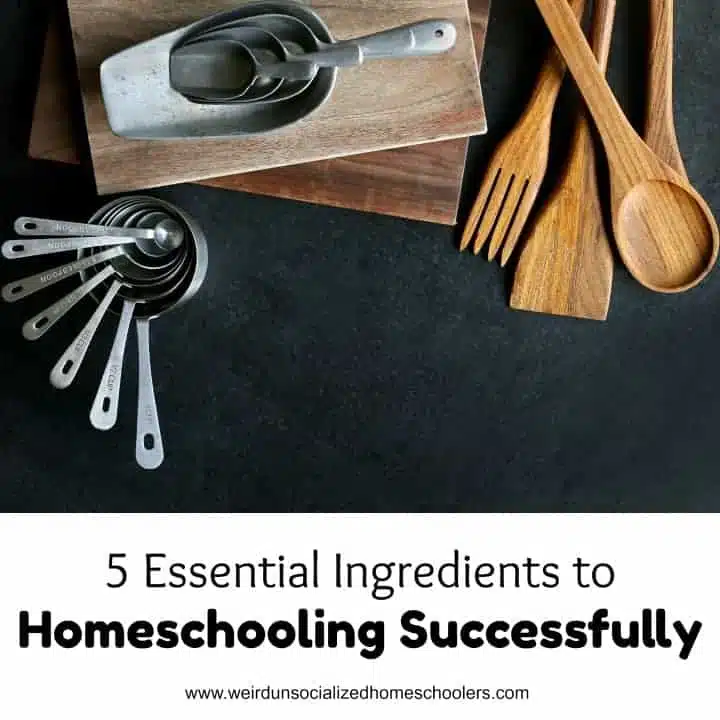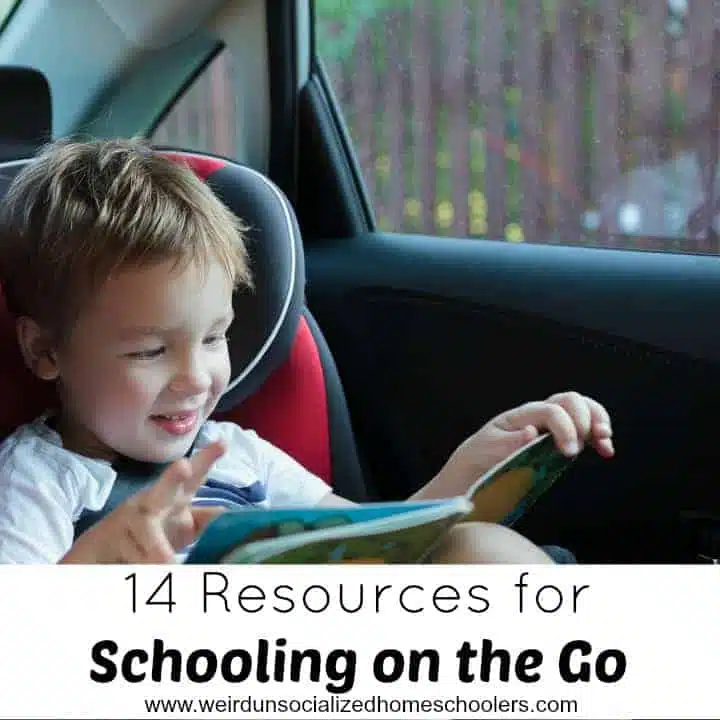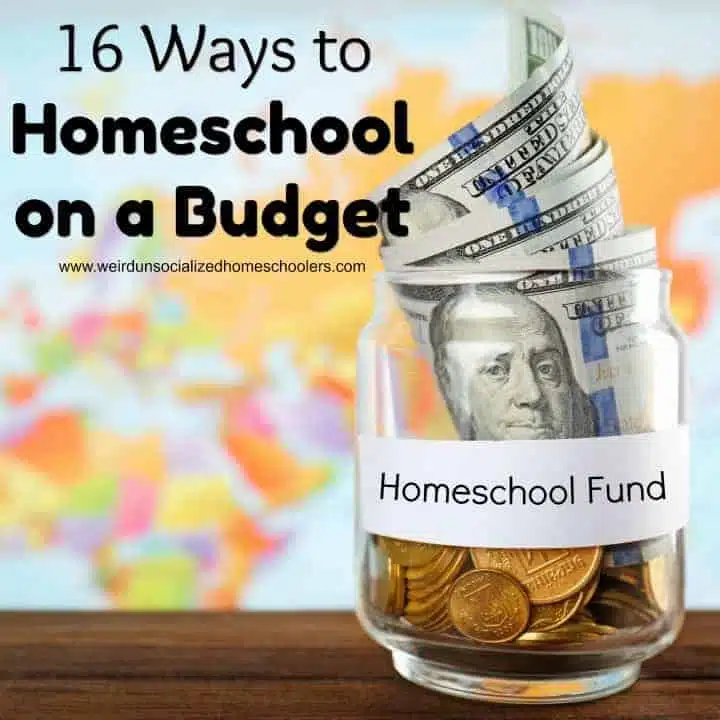Homeschooling With Less: How Minimalist Homeschooling Works
Unless you’ve been living under a rock, you’ve probably noticed that minimalism is all the rage. For many, this “lifestyle with less” just makes sense. Less clutter often means less stress, and that’s always a good thing—especially for homeschooling parents.
As an RVing roadschooling family, we’ve also found that minimalism works well for us. After all, at only 216 square feet, our living space is far from spacious. Besides, our frequent moves are much simpler with fewer material possessions to pack up and cart around.
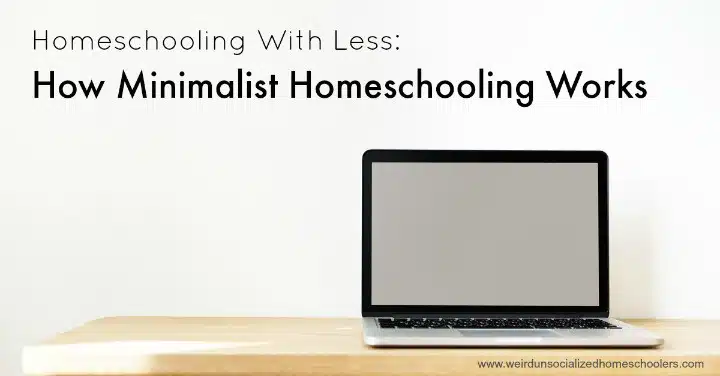
This post contains affiliate links. See full disclosure policy for more details. Email and RSS feed readers may need to visit the blog to access affiliate links.
The question for many is, “How do you do it?” Many homeschooling parents like to stock up on supplies. They own all the manipulatives and gather the neatest learning games. They have shelves filled with books and invest in mountains of curriculum.
While there is absolutely nothing wrong with this method, I understand why those with this image of homeschooling have a hard time understanding minimalist homeschooling.
For some, the idea of minimalist homeschooling is completely unappealing. However, if you’d like to take a more minimalistic approach to schooling and life in general but are having a hard time cutting back on school supplies, I’ve got some tips for you.
Here’s how we do it and how you can dive into the minimal homeschooling game.
Read Digital
As I’ve mentioned before, our family loves reading. We read nightly before bed and together throughout the day. For this reason, books were one of the first things we had to figure out when downsizing to our tiny RV home. We couldn’t give them up books entirely, but they are space-consuming and heavy.
Digital books to the rescue!
Although we did keep a few of my son’s favorite books and have collected a few more here and there, our physical collection currently consists of fewer than 20 books. However, we have access to hundreds (if not thousands) of digital books.
No, we don’t purchase all of those digital books. That would get way too pricey. Instead, we use a few different services.
Overdrive — Overdrive is our favorite service for digital book borrowing. It links directly to our “home” library card—alongside hundreds of participating libraries across the US—and allows us to borrow any digital books available in our library system. Moreover, we can request books that our library system doesn’t have digital copies of yet, and they will often purchase them within days!
Amazon FreeTime — Our son also has Amazon FreeTime on his Kid’s Edition Kindle Fire tablet. FreeTime is a paid service, but at only $5 a month—$2 with a Prime subscription—we find it is well worth it. The FreeTime program gives our son access to a massive selection of kid-approved digital books, which he uses regularly. It also allows him to watch tons of curated video content and download dozens of great games.
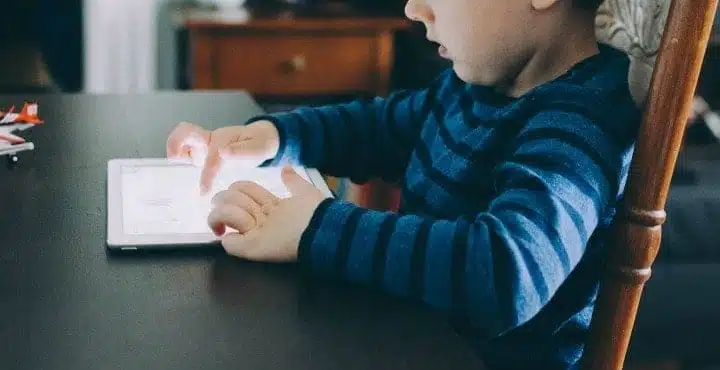
Amazon Prime — We have yet to pay for Amazon Prime. However, we have had a trial account on occasion and found that there were quite a few good Kindle books available for free to Prime members.
Kindle Unlimited — This is the only option we haven’t tried at all. However, based on the books available through Prime, we’re betting there are plenty of amazing books available through the Kindle Unlimited service. This would be a good one to try if your library system doesn’t work with Overdrive, or if they have a very limited selection.
Borrow, Don’t Buy
Of course, there’s nothing quite like having an actual book in your hand. If you crave the feel and smell of a physical book, head to the library instead of purchasing a book. You’ll save resources as well as money, and keep your home clutter-free.
Love learning through board games? You can often borrow board games from libraries as well! Be sure to check your local branch to see if this is an option.
Most libraries also offer DVDs, CDs, audiobooks and even magazines to borrow.
Stream Video
Many kids love to learn through video. However, an enormous collection of DVDs is cumbersome and prone to breaking when kids are involved. Fortunately, we live in an age when DVDs are nearly obsolete.
Take advantage of the many streaming services out there, such as Netflix, Hulu, or YouTube, and incorporate them into your schooling. This will reduce your need for an extensive educational DVD collection, and could even make some of your textbooks and workbooks unnecessary.
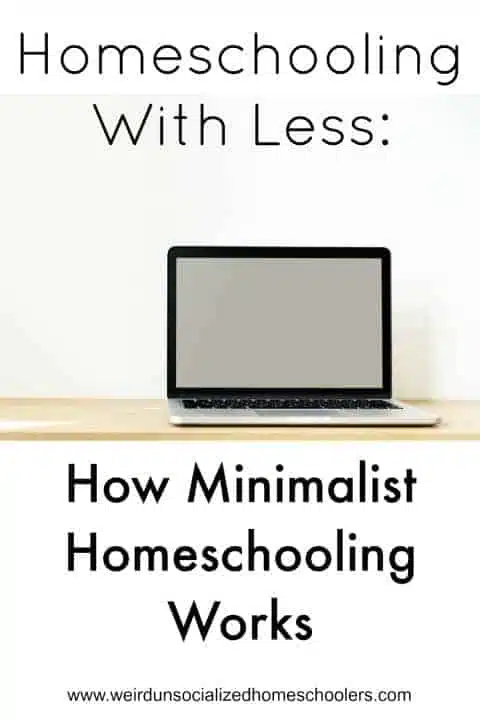
Go Online
Textbooks are heavy, bulky, and that take up tons of shelf space. On top of that, notebooks and loose-leaf papers can quickly clutter your living area and are nearly impossible to keep organized.
For those reasons, I highly recommend considering an online curriculum for any formal schooling your family may do. While my family is very relaxed and prefers to take an “unschooling” approach to things, I could see myself using one of the following online curriculums in the future if we decide to do some more structured schooling:
Use Everyday Materials
Finally, I suggest making use of everyday materials. Instead of buying a set of math manipulatives, try using pieces of cereal. Want to teach how to count money? Dump the piggy bank instead of purchasing pretend coins. By taking a look around your home, you’ll likely find plenty of things you can use as learning tools.
I’m so glad that my family chose a minimalist homeschooling approach. The lack of stuff to keep track of really helps keep me stress-free so I can focus on giving my child fantastic learning experiences.
Are you a minimalist homeschooler? What tips would you add?



